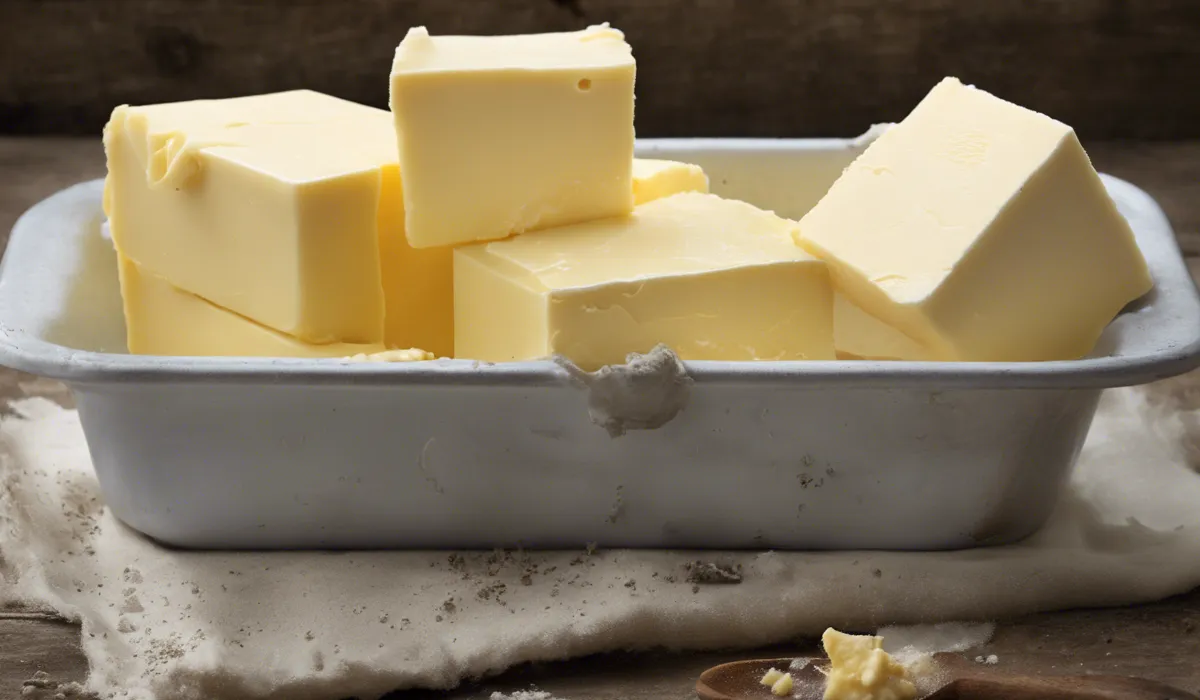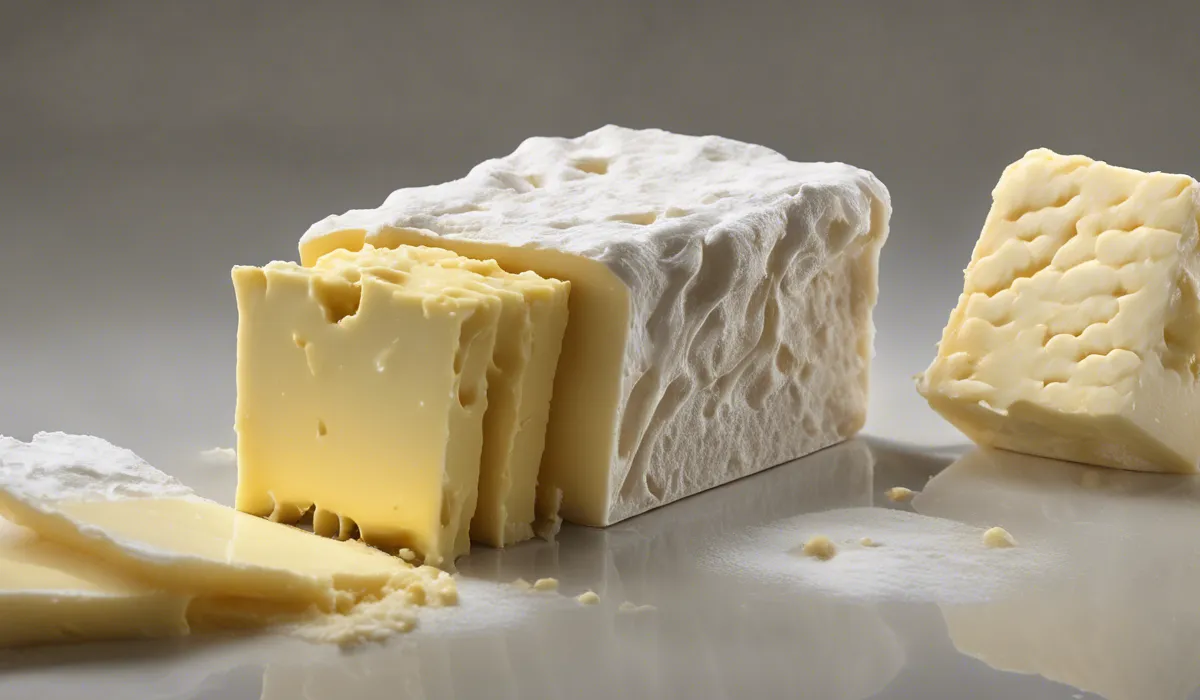Butter molds due to the growth of bacteria or fungi when stored improperly. Factors like warmth, moisture, and exposure to air can accelerate this process.
To prevent molding, store butter in the refrigerator and keep it sealed. Use clean utensils to avoid contamination.
Composition of Butter and Factors that Promote Mold Growth

What Butter Is Made Of?
Butter is a dairy product with a simple composition. It mainly consists of fat, water, and sometimes salt. The fat comes from cream, which is churned until it thickens into butter.
This process also leaves a small amount of water within the butter. When salt is added, it not only enhances the flavor but also acts as a preservative.
Moisture Content and Mold Growth
The water present in butter can encourage mold growth. Mold loves moisture and can use it to grow and multiply.
When butter is left at room temperature or in conditions where it can absorb moisture, the risk of mold forming increases.
Environmental Factors Affecting Mold Growth
Temperature, light, and air exposure are critical in determining how quickly mold can grow on butter.
Warmth can speed up mold growth, while light and air can introduce and activate mold spores. Keeping butter cool and sealed helps slow down these processes.
Butter Types and Mold Susceptibility
Different types of butter can resist mold to varying degrees. Salted butter, due to its salt content, is less prone to mold compared to unsalted varieties.
Pasteurized butter has a lower risk of mold because the pasteurization process kills bacteria and mold spores, while unpasteurized butter can be more susceptible.
How Mold Spores Contaminate Butter?

The Nature of Mold Spores
Mold spores are tiny particles that float in the environment. They are part of the natural world and can easily spread through the air, contaminating surfaces they land on, including food items like butter.
Routes of Contamination
Mold can reach butter in various ways. Cross-contamination can occur when moldy food touches butter, or when it’s stored in open containers that allow spores to enter.
Improper handling, such as touching butter with unclean hands, can also introduce mold.
Storage and Mold Contamination
How butter is stored plays a significant role in whether it will mold. Butter left out at room temperature is more likely to grow mold than butter kept in the fridge. Proper refrigeration significantly slows mold growth.
Contaminated Utensils and Mold Development
Using utensils that are not clean can transfer mold spores to your butter. Once on the butter, these spores can grow, leading to visible mold and possible spoilage of the butter.
Prevention and Remediation: Keeping Butter Mold-Free

Storing Butter Correctly
Storing butter properly is crucial in preventing mold. Keeping butter in the refrigerator and using airtight containers helps maintain its freshness and prevent mold spores from contaminating it.
Handling Butter Wisely
To minimize the risk of mold, always use clean utensils when handling butter. Avoid letting butter come into contact with other foods, especially those that could contain mold spores, like bread.
Responding to Mold on Butter
If you spot mold on butter, assess the situation. Small amounts of mold on hard butter can sometimes be removed, but if the mold has penetrated deeply or if the butter is soft, it’s best to discard it to avoid health risks.
Regular Checks and Understanding Shelf Life
Regularly checking your butter for mold and knowing its shelf life can help you use it while it’s still good.
Different types of butter have different shelf lives, with pasteurized and salted varieties generally lasting longer.
FAQs About Why Does Butter Mold
What causes butter to mold?
Butter molds due to the growth of bacteria or fungi that thrive in unsuitable storage conditions, such as warmth, moisture, and excessive exposure to air.
Can improper storage accelerate the molding process of butter?
Yes, improper storage such as keeping butter at warm temperatures, in moist conditions, or exposed to air can accelerate the molding process.
How should butter be stored to prevent molding?
To prevent molding, butter should be stored in the refrigerator and kept in an airtight container or its original packaging to limit exposure to air and moisture.
Does using unclean utensils affect the likelihood of butter molding?
Yes, using unclean utensils can introduce bacteria or fungi to butter, increasing the risk of contamination and subsequently leading to mold.
Is it safe to eat butter that has started to mold?
It is not advisable to eat butter that has visible mold, as it may contain harmful bacteria or toxins that can lead to foodborne illnesses.
Final Thoughts
Butter molds due to bacterial or fungal growth, often spurred by warm, moist conditions and air exposure.
Proper storage in the refrigerator, keeping it sealed, and using clean utensils to avoid contamination are essential steps to prevent the molding of butter.
